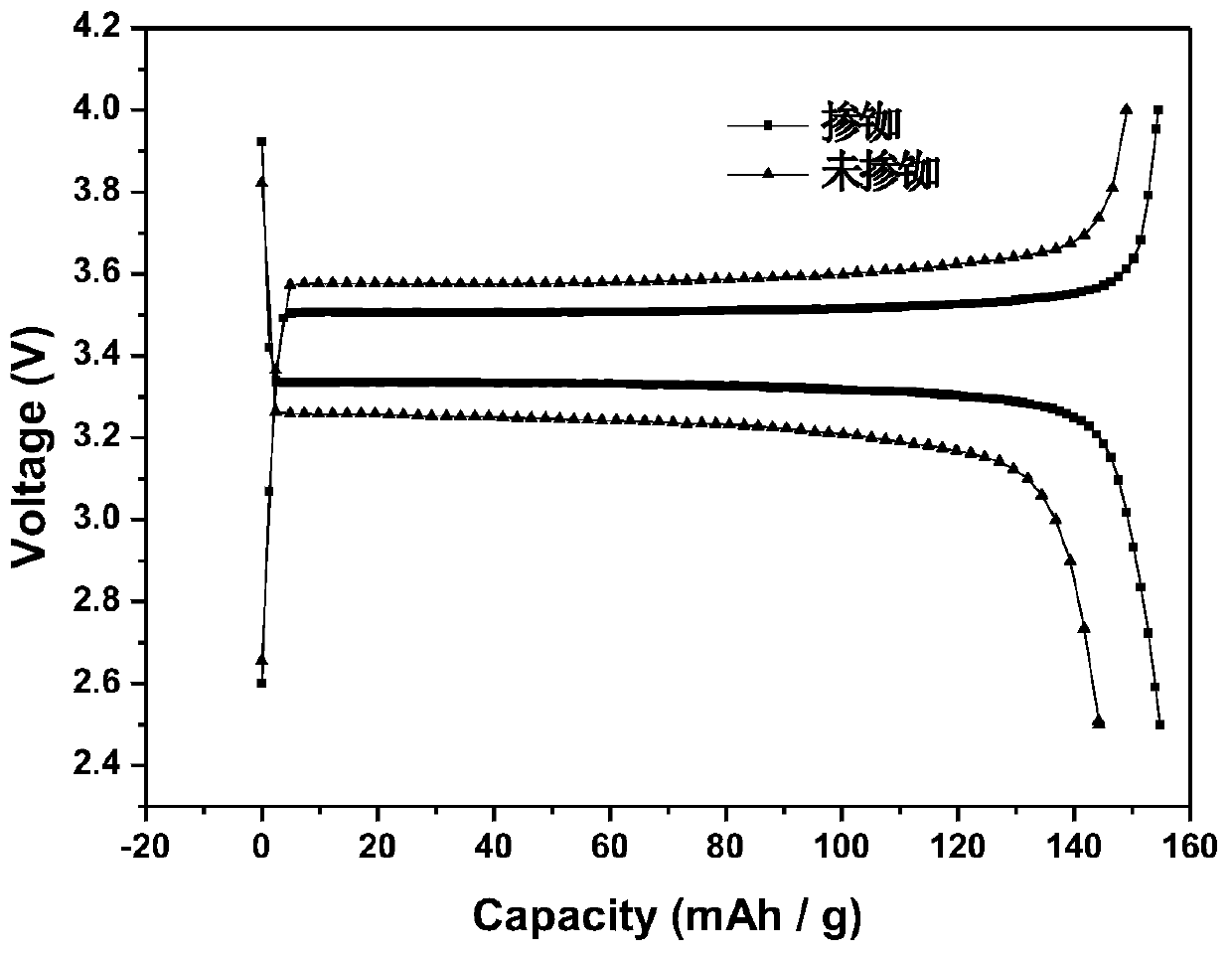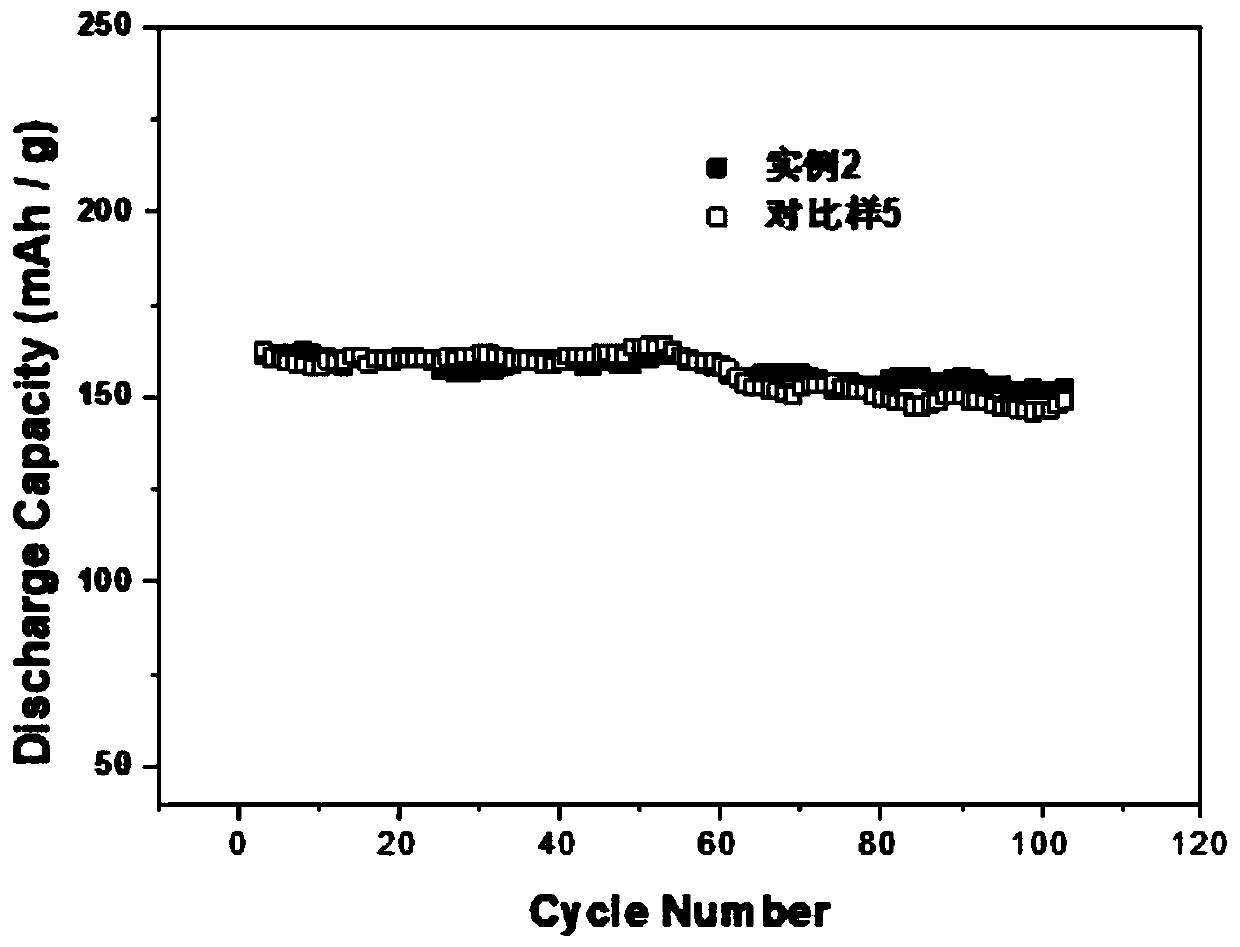Preparation method of rubidium doped polymer solid electrolyte membrane
A solid electrolyte membrane and polymer technology, applied in the direction of electrolyte immobilization/gelation, circuits, electrical components, etc., can solve the problems of improved mechanical properties, low electrical conductivity, complicated preparation process, etc. The effect of increasing the surface area and enhancing practicality
- Summary
- Abstract
- Description
- Claims
- Application Information
AI Technical Summary
Problems solved by technology
Method used
Image
Examples
Embodiment 1
[0023] A method for preparing a rubidium-doped polymer solid-state electrolyte membrane, comprising the following steps:
[0024] Step 1, mixing polyvinyl carbonate and ethanol at a mass ratio of 1:9, adding 1 wt% diisocyanate relative to polyvinyl carbonate, and stirring at room temperature for 1 h to obtain an alcoholic solution of polyvinyl carbonate;
[0025] Step 2, adding rubidium nitrate to the alcohol solution of polyvinyl carbonate, controlling the mass ratio of rubidium nitrate to polyvinyl carbonate to be 0.01:0.99, and stirring at room temperature for 1 hour to obtain a mixed solution of polyvinyl carbonate and rubidium nitrate;
[0026] Step 3, soak the polyethylene diaphragm with a porosity of 42% and a thickness of 9um in the mixed solution of polyethylene carbonate and rubidium nitrate for 10 minutes, and take it out at 400mJ / cm 2 UV irradiated for 2 hours to obtain a polyethylene diaphragm with a layer of cross-linked polyethylene carbonate attached to the sur...
Embodiment 2
[0029] A method for preparing a rubidium-doped polymer solid-state electrolyte membrane, comprising the following steps:
[0030] Step 1, mixing polyethylene oxide and ethanol at a mass ratio of 2:8, and adding 2wt% diisocyanate relative to polyethylene oxide, stirring at room temperature for 1 h to obtain an alcohol solution of polyethylene oxide;
[0031] Step 2, adding rubidium chloride to the alcohol solution of polyethylene oxide, controlling the mass ratio of rubidium chloride to polyethylene oxide to be 0.05:0.95, stirring at room temperature for 1h, obtaining polyethylene oxide and polyethylene oxide rubidium chloride mixed solution;
[0032] Step 3, soak the polyethylene diaphragm with a porosity of 42% and a thickness of 9um in the mixed solution of polyethylene oxide and rubidium chloride for 10 minutes, and take it out at 400mJ / cm 2 UV irradiated for 2 hours to obtain a polyethylene diaphragm with a layer of cross-linked polyethylene oxide attached to the surface;...
Embodiment 3
[0035] A method for preparing a rubidium-doped polymer solid-state electrolyte membrane, comprising the following steps:
[0036] Step 1, mixing polyacrylonitrile and acetonitrile in a mass ratio of 2:8, adding 1 wt% divinylbenzene relative to polyacrylonitrile, and stirring at room temperature for 1 h to obtain an organic solution of polyacrylonitrile;
[0037] Step 2, rubidium sulfate is added in the organic solution of polyacrylonitrile, the mass ratio of controlling rubidium sulfate and polyacrylonitrile is 0.1:0.9 After stirring at room temperature for 1h, a mixed solution of polyacrylonitrile and rubidium sulfate is obtained;
[0038] Step 3, soak the polyethylene diaphragm with a porosity of 42% and a thickness of 9um in the mixed solution of polyacrylonitrile and rubidium sulfate for 10min, and take it out at 400mJ / cm 2 UV irradiation for 2 hours to obtain a polyethylene diaphragm with a layer of cross-linked polyacrylonitrile attached to the surface;
[0039] Step 4,...
PUM
| Property | Measurement | Unit |
|---|---|---|
| Thickness | aaaaa | aaaaa |
Abstract
Description
Claims
Application Information
 Login to View More
Login to View More - R&D
- Intellectual Property
- Life Sciences
- Materials
- Tech Scout
- Unparalleled Data Quality
- Higher Quality Content
- 60% Fewer Hallucinations
Browse by: Latest US Patents, China's latest patents, Technical Efficacy Thesaurus, Application Domain, Technology Topic, Popular Technical Reports.
© 2025 PatSnap. All rights reserved.Legal|Privacy policy|Modern Slavery Act Transparency Statement|Sitemap|About US| Contact US: help@patsnap.com



